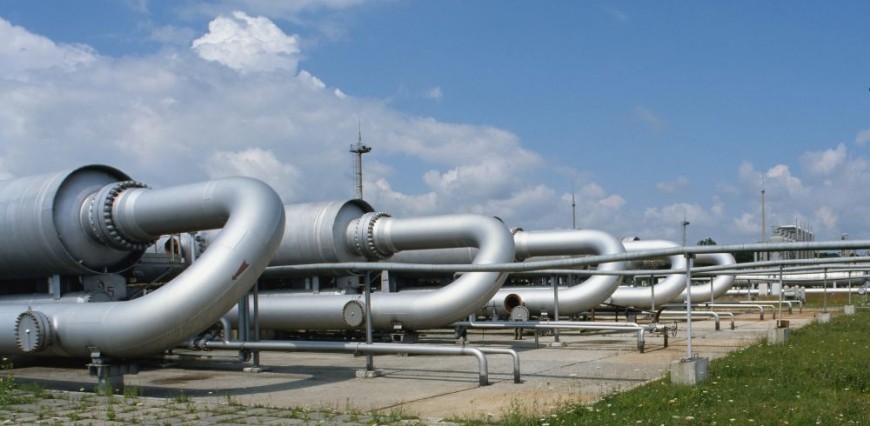 U.S. natural gas output could fall in coming months, after touching record highs in the second quarter, according to some analysts, setting the stage for prices to rise as demand from new liquefied natural gas exports and power plants come online.
U.S. natural gas output could fall in coming months, after touching record highs in the second quarter, according to some analysts, setting the stage for prices to rise as demand from new liquefied natural gas exports and power plants come online.
Even though the number of gas rigs operating has climbed to a 16-month high, according to energy service provider Baker Hughes, more than a third of U.S. gas comes from associated gas produced during oil drilling. And the U.S. oil rig count has declined for 12 weeks in a row to its lowest level since September 2021.
The U.S. is the world’s biggest producer and consumer of gas and also the largest supplier of LNG to the world. Any drop in U.S. output would likely result in higher gas prices for consumers in the U.S. and around the world.
Almost all analysts expect U.S. output, LNG exports and demand, mainly to fuel power-hungry data centers, will continue to grow in the future, bolstering the market after some years of relatively weak prices.
In the near-term, however, gas supplies could decline after relatively low oil and gas prices in recent years drove energy firms to cut back on new drilling, some analysts, including the U.S. Energy Information Administration (EIA), have projected.
U.S. energy firms produced around 106.4 billion cubic feet per day (bcfd) of gas in the second quarter of 2025, topping the prior quarterly record of 105.6 bcfd during the first three months of the year, according to EIA’s latest outlook.
The EIA projects output will decline to 106.1 bcfd during the third quarter and to 105.4 bcfd during the fourth quarter and will average 105.4 bcfd for the rest of 2026.
If correct, 2026 would be the second time annual output declines in three years. Output hit a record 103.6 bcfd in 2023 before sliding to 103.2 bcfd in 2024 and is on track to rise to 105.9 bcfd in 2025.
“While we do not agree with the EIA’s outlook for declining gas production into 2026, the probable failure of supply to keep pace with soaring LNG demand creates substantial upside natural gas price risks over the next 12 months,” said Eli Rubin, senior energy analyst at consultancy EBW Analytics Group.
Gas demand, including LNG and pipeline exports, is on track to rise from a record 111.5 bcfd in 2024 to 115.4 bcfd in 2025 and 116.7 bcfd in 2026 due primarily to an expected 16% increase per year in LNG exports this year and next.
U.S. pipeline operator Kinder Morgan said in its second quarter earnings call that total gas demand is expected to grow by 20% through 2030 as LNG capacity more than doubles over that time period.
MIXED OUTLOOKS
Three of the biggest U.S. gas producers – EQT, Range Resources and CNX Resources – will report earnings this week. Even as some forecasters and analysts have said they expect a decline in output, those firms have said they expect their output to rise this year.
In April, the country’s second-biggest gas producer EQT said it plans to reduce capital spending but produce more – about 6.03-6.30 billion cubic feet of gas equivalent per day (bcfed) in 2025, compared with an average of 6.10 bcfed in 2024.
Range said in April it planned to produce about 2.20 bcfed in 2025, up from around 2.18 bcfed in 2024.
CNX said in April it planned to produce about 1.66-1.70 bcfed in 2025, up from around 1.51 bcfed in 2024.
Last week, EQT said it agreed to supply gas to two different proposed projects to redevelop coal-fired power plants in Pennsylvania – Homer City and Bruce Mansfield – into gas-fired plants to meet growing demand for electricity, including to run artificial intelligence (AI) technologies at data centers.
“Skepticism around the magnitude of the “Gas to AI” theme has been building among investors; (EQT’s) announcement should quell some of that,” analysts at U.S. investment bank Jefferies said in a note.
(Reporting by Scott DiSavino; Editing by Liz Hampton and Marguerita Choy)